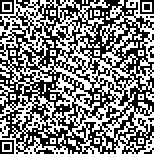| 摘要: |
| [摘要] 目的 观察经皮撬拨复位螺钉固定治疗跟骨关节内移位骨折的疗效。方法 选择2020年8月至2021年10月于青岛滨海学院附属医院骨科采用经皮撬拨复位螺钉内固定治疗跟骨关节内移位骨折22例(25足)。其中男19例(22足),女3例(3足);年龄29~71(46.82±7.59)岁。致伤原因:高处坠落20足,交通事故5足。Sanders分型:Ⅱ型13足,Ⅲ型12足。受伤至手术时间3~12(7.71±2.73)d。记录手术时间、术中出血量、伤口愈合情况、术后并发症。分析术前、术后第2天及终末随访的患足跟骨的长度、宽度、高度,以及Böhler角、Gissane角的变化情况。采用视觉模拟量表(VAS)评分、美国足踝骨科学会(AOFAS)踝-后足评分、Maryland评分评估患者的恢复情况。结果 本组22例(25患足)均顺利完成手术,手术时间(57.15±5.42)min,术中出血量(13.02±1.76)ml。切口均达Ⅰ期愈合。未出现切口感染、骨折不愈合、畸形愈合、神经血管损伤等严重并发症。术后Böhler角、Gissane角,以及跟骨长度、高度、宽度均较术前有显著改善(P<0.05)。患者术前VAS评分为(7.04±0.20)分,术后第2天下降至(4.30±0.20)分,终末随访时为(1.20±0.20)分。终末随访时,AOFAS踝-后足评分为(91.40±6.50)分,Maryland评分为(93.40±4.90)分。优16足,良9足,优良率达100.00%。结论 经皮撬拨复位螺钉固定治疗跟骨骨折创伤小,安全性好,患者满意度高,但对于复杂的关节面塌陷的骨折较难获得关节面解剖复位,需进一步改进完善。 |
| 关键词: 跟骨 关节内移位骨折 经皮撬拨复位螺钉固定 微创 |
| DOI:10.3969/j.issn.1674-3806.2022.12.13 |
| 分类号: |
| 基金项目:山东高等学校青创人才引育计划康复治疗学研究创新团队项目 |
|
| An observation on the curative effect of percutaneous reduction and screw fixation on treatment of displaced intra-articular calcaneal fractures |
|
FANG Bing, LIU Jian-quan, LI Zhi-shuai
|
|
Department of Orthopedics, the Affiliated Hospital of Qingdao Binhai University, Shandong 266000, China
|
| Abstract: |
| [Abstract] Objective To observe the curative effect of percutaneous reduction and screw fixation on treatment of displaced intra-articular calcaneal fractures. Methods Twenty-two cases(25 affected feet) of displaced intra-articular calcaneal fractures who were treated with percutaneous reduction and screw fixation in Department of Orthopedics, the Affiliated Hospital of Qingdao Binhai University from August 2020 to October 2021 were selected. Among the patients, there were 19 males(22 affected feet) and 3 females(3 affected feet), and their age ranged from 29 to 71(46.82±7.59)years. The causes of the injuries: fall accident from high places(20 affected feet) and traffic accident(5 affected feet). Sanders classification: 13 affected feet of type Ⅱ and 12 affected feet of type Ⅲ. The time from injury to operation was 3-12(7.71±2.73)days. The operation time, intraoperative blood loss, wound healing and postoperative complications were recorded. The length, width and height of the affected heel bone, as well as the changes of Böhler angle and Gissane angle before operation, on the second day after operation and at the final follow-up were analyzed. The Visual Analogue Scale(VAS) score, American Orthopaedic Foot and Ankle Society(AOFAS) ankle-hindfoot score, and Maryland score were used to evaluate the recovery of the patients. Results The operation was successfully completed on the 22 patients(25 affected feet) in this group. The operation time was (57.15±5.42)min, and the intraoperative blood loss was (13.02±1.76)ml. All the incisions healed by first intention. There were no serious complications such as incision infection, nonunion of fracture, malunion, and neurovascular injury. The Böhler angle, Gissane angle, and the length, height and width of the calcaneus were significantly improved after operation compared with those before the operation(P<0.05). The preoperative VAS scores of the patients were (7.04±0.20)points, which decreased to (4.30±0.20)points on the second day after the operation, and decreased to (1.20±0.20)points at the final follow-up. At the final follow-up, the AOFAS ankle-hindfoot scores were (91.40±6.50)points, and the Maryland scores were (93.40±4.90)points. The scoring results were excellent in 16 feet and good in 9 feet, and the excellent and good rate was 100.00%. Conclusion Percutaneous reduction and screw fixation is minimally invasive, safe and highly satisfactory in the treatment of calcaneal fractures for the patients. However, it is difficult to obtain anatomic reduction of the articular surface for complex fractures with collapsed articular surface, and further improvement is required. |
| Key words: Calcaneus Displaced intra-articular fracture Percutaneous reduction and screw fixation Minimally invasive |

